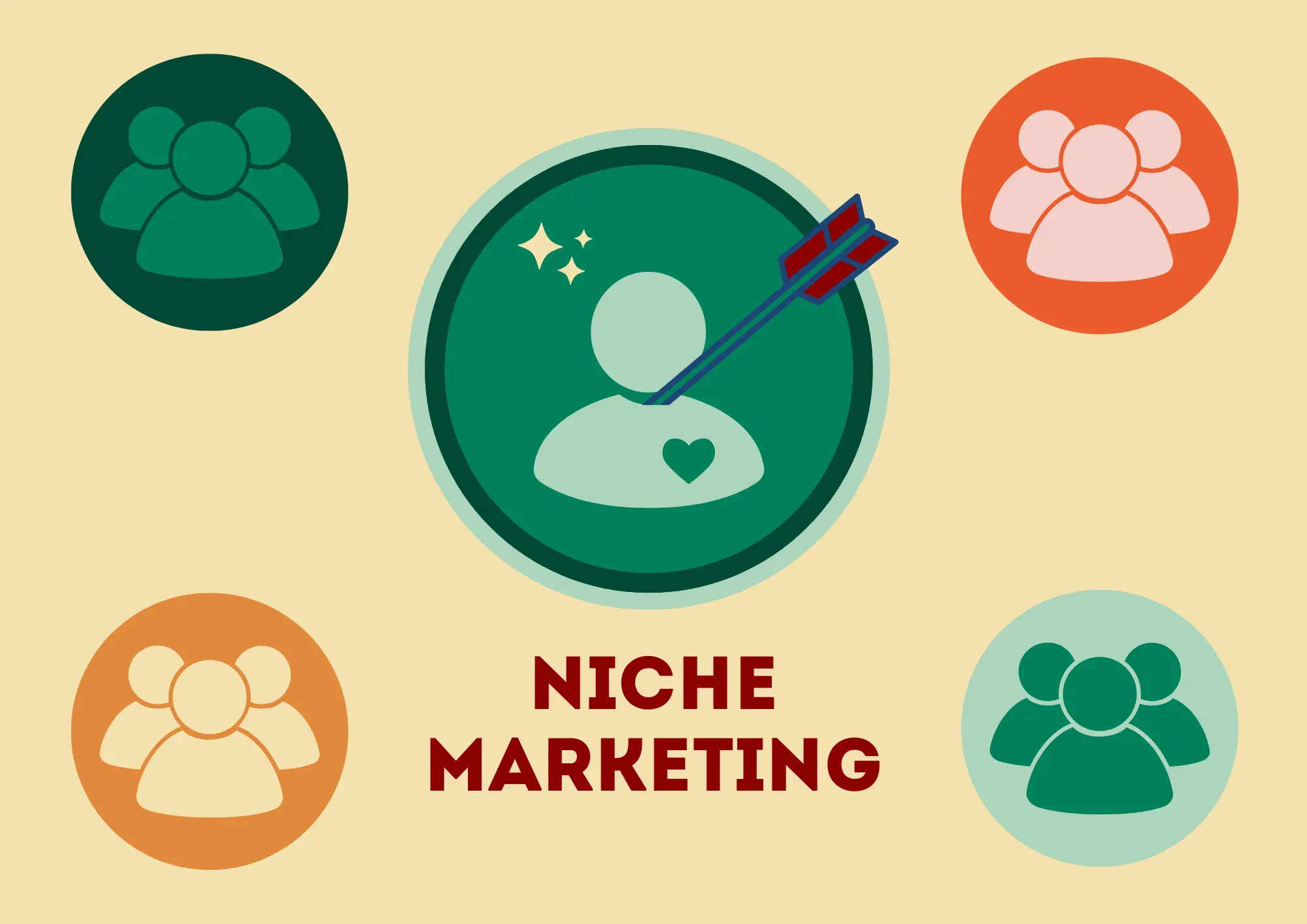The Ultimate Guide to Niche Marketing for Your Business

- What Is Niche Marketing and PR
- How Is Niche Marketing Different from Traditional Marketing
- How to Create a Niche Marketing and PR Strategy to Promote Your Niche Business
- Niche Marketing FAQ
- Can a PR or Marketing Agency Help Us with Niche Marketing?
- Examples of Niche Marketing
Do you work in a large industry, but you want to promote your products to a specific audience? Maybe you’re working in a business area that has a small customer base. Have you struggled to get your business noticed or reach the right customers? Niche marketing can be tricky.
Don’t worry, we’re here to help. In this blog, we’re sharing our top tips to help you create the most effective niche PR and marketing strategy that will get your business noticed!
What Is Niche Marketing and PR?
Let’s start by defining what niche marketing and PR are. Niche marketing is all about promoting, and ultimately selling, a product or service to a small, target audience. It’s usually a specialised product that caters to a specific need or interest.
You might want to do this for two different reasons. First, you want to target a small section of your customer base. For instance, instead of selling general skincare products, your niche business might offer cruelty-free vegan face washes for environmentally conscious customers. The second reason is that you work within an industry with a small audience. A perfect example would be the work we do with our clients SEMA and Teepee, who are both big players within the pallet racking industry.
How Is Niche Marketing Different from Traditional Marketing?
So, you might be wondering, what’s the difference between regular marketing and PR and working within a niche industry or business area?
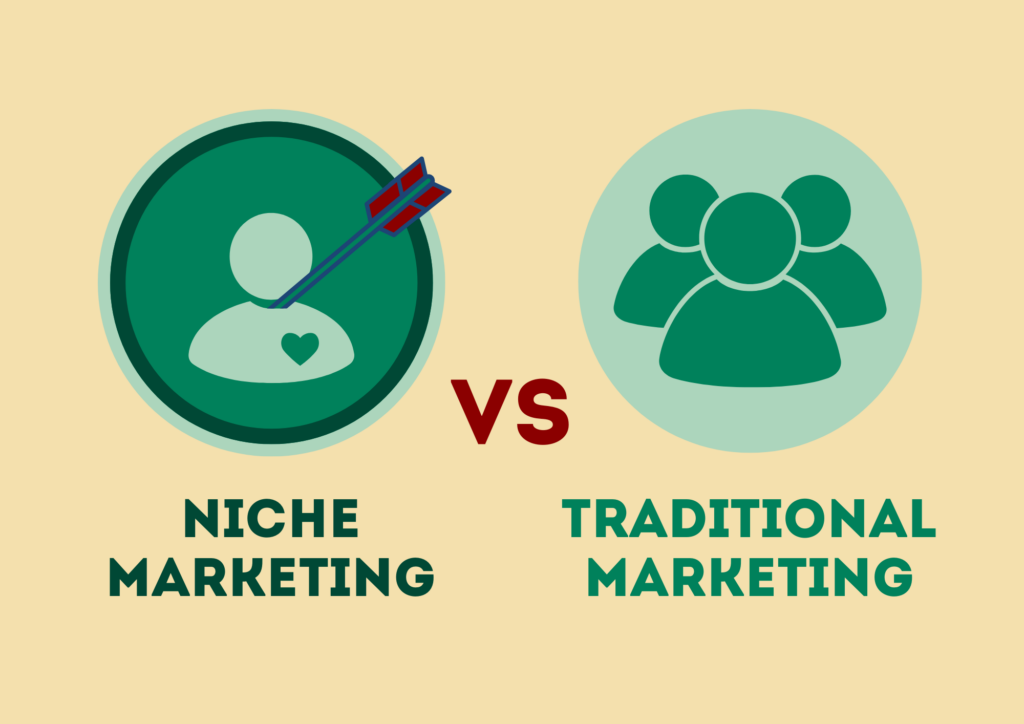
Traditional Marketing
When working with broader markets, the marketer has the advantage of sending communications out to a much wider audience base e.g. a company selling construction materials. They want to send out a marketing campaign about their latest roofing materials product which will reach contractors, developers and even self-builders. Of course, each audience profile will need a slightly different communications approach that talks directly to them, but largely the product benefits, branding and tone of voice will deliver a commonality that appeals to each group.
Once a customer recognises your brand and company as a voice of trust, they will start to notice other advertising opportunities you send out. Once you have them directed to your website or get them in your shop, it provides the perfect opportunity to cross-sell other complementary products.
Niche Marketing
With niche marketing and PR, you are targeting a much smaller audience. They will have very specific requirements that need personalised marketing campaigns that get to the heart of their pain points. That’s means you need to know exactly what they want, why they want it and produce content that exactly matches their requirements. With this approach, there is no place to hide – get the wrong niche marketing strategy in place and it will be instantly noticeable.
How to Create a Niche Marketing and PR Strategy to Promote Your Niche Business
It’s time to get stuck into the bread and butter of it all – how to create a niche marketing and PR that’s going to make your business shine.
With many years of doing marketing and PR for a wide range of niche clients, we’ve got a few tricks up our sleeves that will kick-start you in the right direction.
Step 1: Define your target audience
First and foremost, define your target audience through segmentation. We can’t stress enough how important it is in a niche market to get this step right. Get it wrong and you’ve wasted a hell of a lot of time talking to the wrong people who have no interest in your product.
There are three main segments of consumers to consider, and you’ll need to do a bit of market research to really understand these groups’ needs and characteristics.
- Behavioural Segmentation
This focuses on how your audience interacts with your product or service. What are they looking for? What benefits do they seek? When are they most likely to make a purchase? Understanding their buying behaviours, perceptions, and values will give you a clearer picture of their motivations and decision-making process.

- Psychographic Segmentation
This dives into personality traits, lifestyle choices, and interests. This enables you to craft communications that resonate with your audience on a deeper level. For example, if you’re selling personalised ties, your target market might be working professionals who prefer a formal dress code and appreciate custom, high-quality accessories for their style.

- Demographic Segmentation
This looks at essential factors like age, gender, income level, and socio-economic background. This provides a lot of insights into how you position your product and which communication channels to pick.

Tip: Try creating some pen profiles of your ideal customers. This is a great way to brainstorm your research and get a clearer picture of who they might be.
Step 2: Research Competition
Even though your industry or niche product area is small, other businesses will be working within your area. It’s worth doing some digging to find out who they are, where they are, and who they’re talking to.
By researching your competitors, you can spot gaps in the market, find inspiration for your niche marketing strategy, and define your USP.
Let’s say you own a donut business. You discover a competitor who’s popular on Instagram for their fun donut decorations but doesn’t offer any gluten-free options. This could be a great opportunity to set yourself apart by promoting vegan and gluten-free donuts!
Tip: Whilst doing this, think about how you can pivot your product or service or shake up your messaging that’s different to your competitors.
Step 3: Choose Your Marketing Channels
This step is about knowing where your audience is looking. Find the channels they’re most active on and start planning how you’ll show up and stand out from your competitors.
- Social media
Social media isn’t about simply turning up on each platform and posting. Each channel has its own unique audience profile. If you’re a B2B, LinkedIn is your best bet, while a B2C or B2B business with visual products or services will find Instagram essential. Bear in mind, these are just benchmarks, your research will help determine the best platform for your specific audience.
Whatever the platform, we recommend making full use of the tools available. Post full articles on LinkedIn or create eye-catching reels on Instagram to grab your audience’s attention.
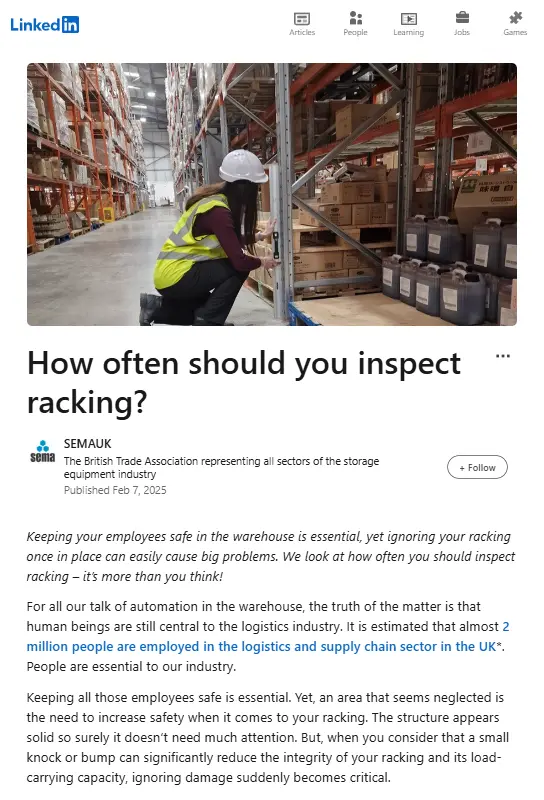
- Magazines and newspapers
With everyone heading online, you might think traditional media titles aren’t worth the effort. This is where you could be wrong, you may find your audience finds magazine articles are a trustworthy source of information. Again, check your audience profiling data.
If you’re taking this route, national titles are perfect for reaching a wide audience, whereas trade magazines are ideal when targeting a precise industry. Trade magazines usually feature national stories or key areas relevant to the industry and enable you to position yourself as a voice of expertise within your chosen field. Find our tips to getting media coverage right here.

- Website
Last, but not least, your website. Most businesses in this day and age have a website. Once in place, it’s a fairly low-cost promotion tool that’s constantly working hard for you. But are you getting the most out of your digital marketing?
Is your website easy to find in the search engines? Can your customers navigate across your site to find the product or service they want? If you’re selling a product, how easily can they make a purchase? Have you provided them with lots of blogs that answer any queries they have about your product or service? Have you thought about how SEO will help attract new customers who may not have heard of you before?
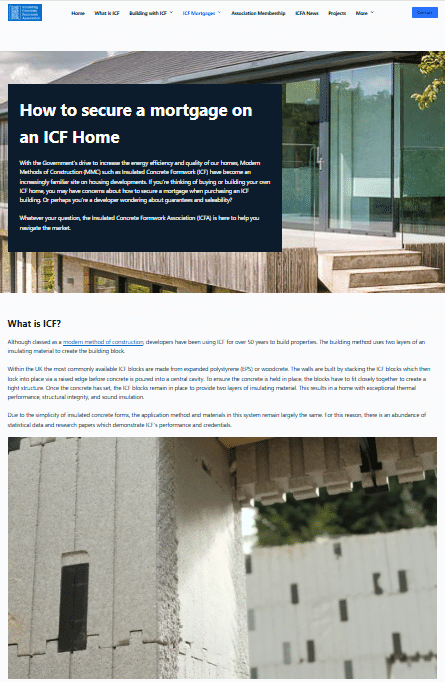
Tip: Focus your efforts on platforms where the majority of your audience is most active and engaged.
Step 4: Develop a strategy
Before jumping in to add blogs and posting on social media, it’s advisable to have a plan in place.
What do you want to get out of your communications? Is it to raise awareness of your company, drive sales or get them to sign up for a newsletter? Once you know your planned niche marketing campaigns, you can go ahead and plan out content pillars and topics which relate to your niche business. This will help you to understand which angles you need to cover and avoid repetition of content.
This is your chance to tell your story and show off your expertise in your niche industry, so don’t hold back! Make sure you’re writing and creative content shines a light on what makes you and your brand awesome.
Tip: If you’re Struggling, why not ask AI for help with your strategy? Just make sure you give clear details on what you’re looking for and your audience so that AI can generate ideas relevant to your goals. But remember, AI is a creative assistant, not a replacement for that unique human touch you bring to the table!
Step 5: Set goals
A strategy is all good and well, but you’ll only know if it’s working by setting goals.
When putting goals in place, make them realistic. There’s no point aiming for 1000 new organic followers in the next month if you’ve only just started a new account. Go for a realistic goal and once you hit it, slowly increase it.
Our next advice is to keep it relevant. If your brand is still gaining awareness, it’s probably too soon to focus on conversions. Instead, try setting goals around increasing your followers, reach, or impressions. Once you’re happy with that, move on to engagement goals like comments, shares, and your engagement rate.
| Social Media Strategy | Increase engagement amongst warehouse owners | Increase lead generation using LinkedIn |
| Social Media Goals | On average to increase the monthly engagement rate by 30% | On average to increase the monthly clicks by 30% |
Tip: Make sure to check in regularly to see where you’re at. If you’re getting close to your targets, your efforts are paying off! But if it’s not, then it might be time to review what’s going on and perhaps even revisit Step 1 to see if you’ve missed anything. (*add anchor)
Step 6: Build your content
It’s time for our favourite part – creating content! If you’re not quite sure what we mean by “content,” we’re talking about the information or media you put out to communicate with your audience.
Content should work hard for your niche business. Obviously, it should align with your audience profile but at the same time it needs to raise awareness of your product and get your potential customers to engage with your business.
It might feel daunting at first, but our advice is to keep within your brand but then keep pushing the boundaries and, above all else, have fun with it. You never know, the craziest idea might be the one that gets everyone talking. Just make sure your content is hitting your customers’ needs!
Tip: Tweak your content to fit the different channels you’re using – after all, each platform is its own little world with its nuances.
Step 7: Reporting and analysing to measure ROI
Keep an eye on how different communication channels and niche marketing campaigns are performing. Not only will it ensure you hit your strategic goals, but perhaps more importantly, it will feed into future communication plans.
- Social Media Reporting
For social media, you’ll need to keep an eye on overall metrics and averages but you should also break performance down on a post-by-post basis. Check out how many reaches, comments, shares, clicks, and the average engagement time each post gets, and compare what works with what doesn’t.
- Website Reporting
On your website, Google Analytics is your best friend! It’ll give you useful metrics like the number of organic searches, page views, and average engagement time you’re getting. It can also break everything down by page, so you can see what content is working and what could use a little love.
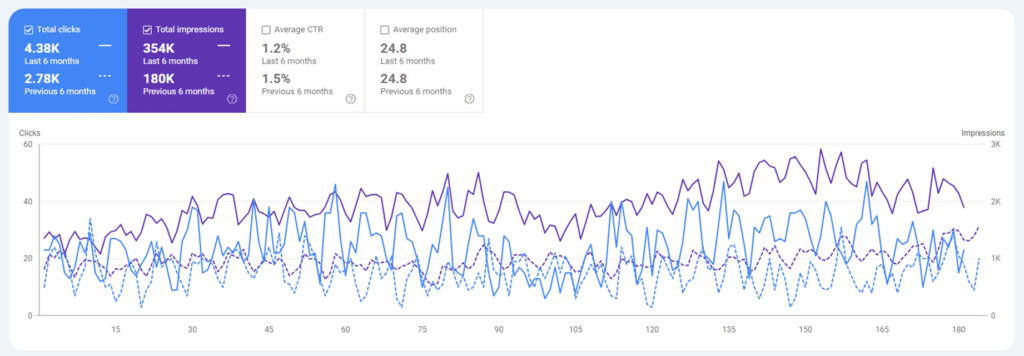
Sending out traditional print media is harder to track, although you should keep an eye on how much coverage you get and whether this increases the number of enquiries. When booking e-newsletters, check back in with the media title and find out how many clicks you’ve secured.
When things are working, it’s very rewarding. But hey, if things aren’t quite where you want them to be, don’t worry. Sometimes it might be something simple, like the headline not being punchy enough or the image not grabbing attention.
Tip: Don’t be afraid to give content that didn’t work another go, but try a different angle to see if it will grab this time.
Step 8: Build credibility
We’ve made it to our final step, adding some credibility to your work! This one’s extra important if you’re a niche business. Think of it as your way of saying, “You can trust me!”
- Ask your existing customers to leave a review or write a testimonial about your product or service. These can go on your social media, Google Business profile, your website, or a platform like Trustpilot.
- Give your business a face by creating a ‘Meet the Team’ page on your website. Add photos, videos and a bio about the different members in your team. You can start by using your camera phone, but once you have the budget, we recommend hiring a professional photographer for that extra polish.
- Submit thought leadership content to trade magazines. This can be a long piece with a byline to yourself or even a short comment about the current state of your industry. Remember, when writing this content, it’s about proving your expertise – don’t make it a sales pitch.
- Sign up for some awards! Whether a local business event or an industry-specific one, entering awards is a fab way to build trust and credibility. Who knows, you might even pick up some new customers whilst getting nominated, a double win!
Tip: To give yourself the best shot at winning an award, you’ll need time to write a killer entry that turns the judges’ heads. Need a little help? Check out our Ultimate Guide to Writing Award Entries here for some top tips!
Niche Marketing FAQ
Still got some questions about how to create your niche marketing, our FAQ might provide the answer.
⌨️Can you still use SEO in niche marketing?
When it comes to keyword research for niche marketing, your SEO strategy will look a bit different from general marketing. That’s because the keywords you rank for will usually have a much lower search volume than wide-reaching topics. That’s not a bad thing! It might sound obvious, but search volumes for keywords are based on how many people search for that term. When working in a niche market your potential customers will be typing in very specific terms. All you need to do is make sure you’re hitting the right terms to ensure your page sits top of the list.
🎯How do I define my niche market?
To develop a niche, first work out your business strengths and whether you can turn one of these into an individual segment. Then explore how this ‘niche’ will benefit your audience and if there’s a market for the product or service. Once you’ve established there is a ‘need’ you can then develop a plan which supports your overall marketing strategy.
📈Can niche marketing help my business to grow?
Put it this way, when trying to sell your products or services to a large audience group you’re going to be up against wider competition. This can make it harder, and potentially more expensive, to stand out. By breaking down your potential audience into a much smaller group, it will help to increase your chances of generating sales. Start with one niche, refine your strategy and then launch. When that one’s in place, move on to the next audience segment and start all over again. With each niche, you’ll grow your sales.
👎What are the cons of niche marketing and PR?
Targeting a smaller audience can be challenging. You really have to zero in on what they want and need. That means putting in more research upfront before you can even start to understand how to promote the right way.
Plus, if your audience has never heard of your product before (or barely knows it exists), you’ll need to spend more time educating about your business. This means creating lots of content that highlights problems they didn’t realise they had while positioning yourself as the solution.
👍What are the advantages of niche marketing and PR?
Typically, you have way less competition. Sure, you have to put in extra effort to understand your audience, but at least you’re not fighting through a crowded, larger market to get noticed. Instead, you’ve got a real shot at establishing yourself and becoming an industry expert. Once your niche audience is engaged, it’s easier to convert and earn customer loyalty. As long as you truly understand their needs and build a strong, trustworthy relationship, they’ll stick with you.
💷How much should I budget for niche marketing?
One of the benefits of a niche marketing plan is that you can, if you want, run it on a smaller budget. The attention to detail required enables you to fine-tune your communications and then focus activities on core areas and messaging. This means your PR and marketing efforts can be just as effective, if not more so, as long as you have a smart strategy in place that works hard for your budget.
Can a PR or Marketing Agency Help Us with Niche Marketing?
So, if you’re reading this and thinking, “Wow, this all sounds like a lot!” don’t worry, you’re not alone! Instead of trying to juggle all these steps yourself (because, let’s be honest, you’ve got enough on your plate!), teaming up with experts who get niche marketing like Aura PR can make a world of difference. They’ll know exactly how to position your brand, connect with the right audience, and make your strategy work, all while saving you time and effort.
Examples of Niche Marketing
Well, that’s a wrap!
We hope this guide has helped you feel more confident about tackling your niche marketing and PR. Keep delivering the right message, branding, and tone of voice that align with your company values, and you’ll build the recognition you’re looking for. If you need a helping hand or just want to bounce around some ideas, remember, we’re only an email or call away!
Follow us on LinkedIn for more marketing and pr tips.

